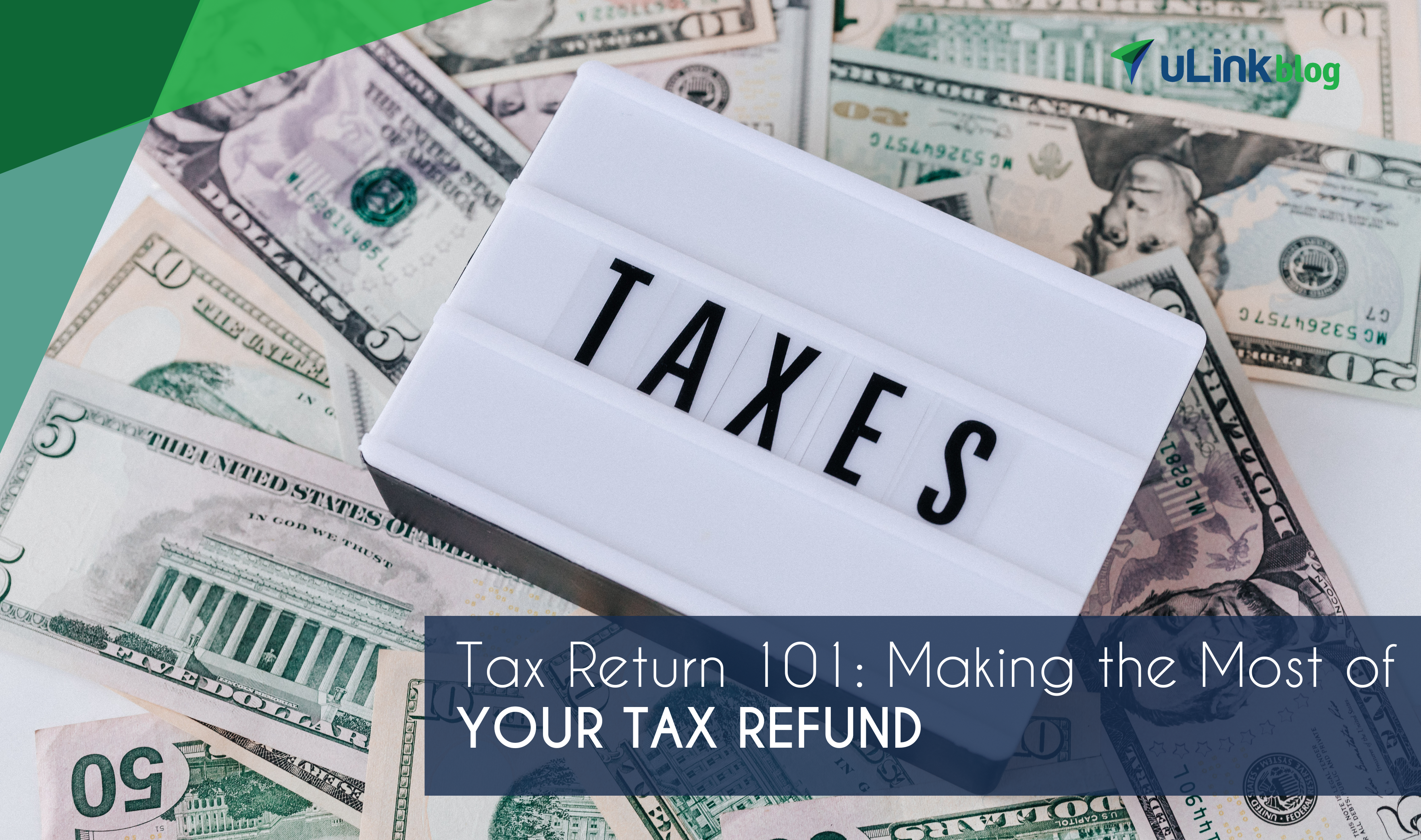
Tax refunds are a beautiful thing.
After months of paying the government, it’s your turn to get reimbursed.
The question is: what will you do with the payout?
While it may be tempting to make an impulse purchase like a new summer wardrobe or a laptop, your tax refund provides an unmissable opportunity to invest in your financial future.
In today’s article, we’ll cover the fundamentals of tax refunds, discuss how you can adjust your withholdings, and reveal five smart ways to spend your tax refund.
Tax Refund Definition
A tax refund is an official reimbursement paid out to taxpayers by the government.
Both the federal and state governments can issue a tax refund, either in the form of a physical check or a direct deposit.
If you receive a tax refund, it’s likely because you overpaid your taxes during the previous tax year. You also may have qualified for a refundable tax credit, such as the Child Tax Credit (CTC) or Earned Income Tax Credit (EITC).
Overpaying taxes is very common in the United States. In fact, roughly 80% of tax returns result in refunds (according to the IRS).
Therefore, a tax refund should not be viewed as a bonus check or a financial reward. It’s your money, and it was essentially loaned to the government over the previous calendar year without interest.
Now that you’ve finally received what’s rightly yours, what to do with your tax refund? It’s very important to use it wisely.
P.S. Later in the article, we’ll discuss how you can adjust your W-4 withholdings, so you don’t overpay taxes throughout the year.
Five Smart Ways to Use Your Tax Refund
A tax refund is your own hard-earned money that’s back where it belongs: in your bank account.
This means that you have a nice chunk of capital to invest wherever you need it most.
While you have many options at your disposal, consider the following five ideas as you plan your financial future.
1. Contribute to Your Retirement
Although it doesn’t sound exciting, you should consider using your tax refund to contribute to retirement, as the stock market averages a 10% annual return.
That’s a big deal, especially in an economy plagued by inflation.
In other words, if you invested $1,000 in an S&P 500 fund at an annual return of 10%, that amount would be worth $2,000 in just 10 years.
And that’s if you never added another cent to the principal investment.
Interest in learning more? You have a few ways to move forward.
For starters, you could invest your refund in a traditional Individual Retirement Account (IRA) for the current tax year (2023).
Secondly, you could open (or augment) a Roth IRA, where you can let the money grow and withdraw it entirely tax-free.
Want to learn more about retirement accounts? Click here to check out our comprehensive guide for Traditional and Roth IRAs.
2. Open a High Yield Savings Account
If the stock market doesn’t interest you, that’s okay.
You can invest your tax refund in a high-yield savings account and still earn up to 5% Annual Percentage Yield (APY).
For example, let’s say you put $2,000 into a savings account with 4.2% APY.
After just five years, your initial deposit would earn $456.79—just by sitting there!
Compound interest is a truly incredible financial phenomenon. That’s why your high-yield savings account can double as the perfect emergency fund for you and your family.
P.S. Click here to check out the best high-yield savings accounts on the market.
3. Pay Off High-Interest Debt
A tax refund is the perfect weapon to attack your longstanding debts.
Maybe you have a high-interest credit card balance or a medical bill haunting your finances.
Whatever your situation may be, a tax refund can help destroy your debts and get back on track.
For example, let’s say you’re paying a 15% interest rate on a credit card. Because of your other financial obligations, all you can manage are monthly minimum payments.
As a result, your revolving balance is rapidly expanding every day, with no end in sight.
Fortunately, your tax refund hits your bank account at exactly the right time. It’s a nice amount of money, and so you decide to apply it to your credit card debt.
You pay off the balance in full and stop the mounting interest in its tracks.
When you pay off your debts, you free yourself and your financial future.
P.S. Click here to learn more about how you can break free from a vicious debt cycle.
4. Prepay Your Mortgage
Few debts demand more of our attention than a monthly mortgage.
Fortunately, your tax refund could help you get ahead of the curve—especially if you use the money to make extra mortgage payments.
After all, prepaying your mortgage can help reduce the total principal and interest you pay over the loan term.
For example, let’s imagine Diego recently purchased a home on a 30-year mortgage with a 5% annual interest rate.
His principal balance sits at $150,000 and requires a mortgage payment of $805.23.
However, after receiving a $2,400 tax refund from the IRS, Diego decides to add $200 to his monthly mortgage payment over the course of the year.
If Diego committed to prepaying his mortgage at an accelerated payment of $1,005.23, two amazing things would happen:
- He would reduce his loan term by 10 years and 6 months.
- He would save over $54,800 in the process.
Prepaying your mortgage is another great way to pay yourself first.
P.S. Check out this mortgage payoff calculator to see just how powerful your new tax refund could be.
5. Support Your Loved Ones
As an immigrant, you understand the cost of living in the modern age better than anyone.
More importantly, you know the burdens your family bears in your home country. That’s why you’re committed to helping them make ends meet through all seasons of life.
Your tax refund presents a wonderful opportunity to continue supporting your loved ones back home.
It’s no secret that global remittances provide tremendous support against poverty and food insecurity, while also building local communities, schools, and businesses.
According to Dilip Ratha, head of the Global Knowledge Partnership on Migration and Development (KNOMAD),
“In five years, remittances will likely become larger than
[overseas] development assistance and FDI combined. We could see
remittances reach a trillion dollars in the foreseeable future.”
As you plan ahead, consider using part of your tax refund to help your family and friends live the life they always imagined.
Planning for Next Year’s Tax Return
While 2024 may seem far away, now is actually the perfect time to get ahead of the game and start preparing.
That’s especially true if you overpaid your taxes and want to avoid doing so in the coming year.
Here are three quick tips to help ensure you get the most out of your money.
Adjust Your W-4 Withholding
There are many good reasons to adjust your W-4.
Maybe you started a second job, got married, or had a baby. Or, maybe you simply made a mistake on your W-4 and ended up overpaying in taxes.
Whatever that case may be, it’s important to review and adjust your withholding status. Fortunately, you can do so at any time during the year.
Simply click here to print your W-4. Once you fill it out, be sure to submit it to your employer as soon as possible.
Maximize Your Tax Credits (And Deductions)
There are some very powerful tax credits and deductions available to you.
These include the Child Tax Credit, the Adoption Credit, the Earned Income Tax Credit, the Lifetime Learning Credit, and many others.
You can also claim dependents (and qualifying relatives), along with taking a number of deductions for things like tuition, rideshare and delivery services, student loans, charitable donations, medical expenses, home office supplies, 401(k) contributions, mortgage interest, and more.
To view the Internal Revenue Service’s comprehensive list of deductions, click here.
P.S. Debating between using tax software or an official tax preparer? Check out uLink’s comprehensive tax guide to help you make the best decision.
Lower Your Taxable Income
Did you know that you can boost your retirement savings while lowering your taxable income?
It’s true! As useful as they are for saving money, IRAs can also lessen your annual tax burden.
After all, if you decide to contribute $6,000 to an IRA, you’ll immediately lower your taxable income by the same amount. So while you’ll be “paying yourself first,” you’ll also be paying less to the IRS.
It’s a win-win.
As a general rule, Tax Day is the deadline for IRA contributions. That means you have until April 15, 2024 to make your IRA contributions of up to $6,000.
If you have any questions about your taxes, be sure to consult with a financial professional.
While they may charge a fee for their services, that cost is typically surpassed by the savings they can help you achieve.
Moving Forward
Congratulations on receiving your tax refund! We hope our suggestions for how to use your tax refund wisely have been helpful.
Whatever path you choose, we’re confident that you’ll put your hard-earned money to good use.
In the meantime, stay tuned for more articles from uLink about the upcoming tax season, financial planning, and more.
While you further your financial freedom, we’re dedicated to helping you support your family with maximum convenience and reliability.
With great exchange rates and fees starting as low as $0, uLink empowers you to send more money to your loved ones than ever before.
Miles from home—just moments away with uLink.









